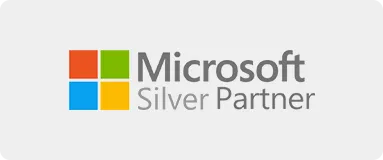Trusted by:
Discover innovative strategies to control the costs of cloud resource provisioning
The 2022 State of Cloud Strategy Survey revealed that 94% of respondents observed overspending on cloud budgets that could have been easily avoided. Respondents pointed to a combination of causal factors; idle or underused resources (66%), overprovisioning (59%), and lack of requisite skills (47%). Most cloud-forward organizations today need to holistically manage their cloud environments to alleviate these shortcomings and ensure cost-effective cloud operations.
Daffodil Software makes an active commitment to reducing the financial complexity of cloud adoption. Our cloud cost optimization services relieve your high-value IT teams from time-intensive management of cloud costs, usage, and savings. We help you gain in-depth visibility into the drivers of your cloud expenditure and identify strategies to control it.
Our cloud cost optimization experts analyze your cloud environment to identify areas of wasteful expenditure or overutilization to eventually implement the best possible approach for remediation. To truly succeed in the cloud, we help you develop a sustainable culture of cost awareness.

Cut your cloud costs and ensure efficient use of existing cloud resources with:

Explore possibilities for driving success in the cloud with:
Cost optimization must remain an important priority through every stage of the software development lifecycle. Our cloud cost optimization services ensure that your cloud budget is aligned with the software product roadmap, helping you control unexpected spending by quickly adjusting the cloud infrastructure when necessary.
Maximize cost efficiency, optimize resource allocation, and achieve financial excellence in the cloud with our state-of-the-art FinOps implementation. We design custom cost-saving processes tailored to your development roadmap with constant updates and practical recommendations for resource allocation.
Gain unparalleled insights into the variables impacting your cloud expenditure through detailed reporting and analytics. Our cloud cost optimization services collect and analyze data about the resources powering your operational workloads in the cloud to identify usage patterns and capitalize on opportunities for optimization.
Take complete control of your cloud expenses with comprehensive cost observability. We empower businesses with full visibility to help them make data-driven decisions about infrastructure optimization for significant cost savings.
Enforce and adhere to policies calibrated for budget-friendly resource provisioning, deployment, utilization, and security measures. We strive to stick to policies that define the best possible CPU usage, storage allocation, network bandwidth, and user access privileges for you.
Our cloud cost optimization services templatize optimal resource allocation patterns for quickly responding to unexpected costs arising from sudden workload changes or traffic spikes. We analyze your workloads and identify cost-effective resource allocation patterns that can be templatized for quick infrastructure setup.
Explicit segregation among all the components of an application workload is essential for the granular alignment of costs with resources. We implement workload factoring for adjusting workloads to unlock money-saving usage patterns and quickly refactor whenever necessary.
How we optimize your cloud infrastructure cost-effectively?
Why Daffodil is your best bet for cost-optimized cloud services?
Don’t build cloud optimization strategies in a silo. By joining forces on your goals for better cost-effectiveness, we will work towards the common objective of judicious cloud resource usage. Rest assured that our team is on the same page as you when it comes to converting your goals into a cloud-based solution of value while ensuring minimal idleness of resources or wastage of any kind.
While we will help you cut costs wherever possible we ensure that there will be no cutting corners in ensuring sustainable growth for your business and your cloud solutions. Our cloud engineers are always on your beck and call whenever you need to significantly improve your cloud cost ROI no matter the duration demanded by your roadmap.
Our extensive experience in the optimization of resources for cost-effective results enables you to always stay ahead of the curve. You will never be unprepared for unforeseen resource utilization hurdles, as we continuously monitor resource usage to ensure that it aligns with your cloud budget.
With granular access control and well-defined dashboards and reporting systems, all stakeholders of the cloud cost optimization workflow gain full visibility of the cost management process. Collaboration with all stakeholders ensures holistic decision-making in line with the business goals and product roadmap.
Our cloud cost optimization success stories:

Daffodil helps Chalo to migrate to AWS cloud platform; resulting in 40% reduction in the cost of IT operations.
Read More >
Automating infrastructure provisioning for a maritime research firm leading to a significantly reduced cloud cost
Read More >
Daffodil helps National Nutrition to migrate to AWS; resulting in 40% cost savings in infrastructure management
Read More >We create technology forward, innovative cloud solutions to keep you ahead in the game, always.
Watch our brand video.
Receive detailed recommendations from our experts
Sign up for a 30 min no-obligation
strategic session with us
- Validation of your project idea/ scope of your project
- Actionable insights on which technology would suit your requirements
- Industry specific best practices that can be applied to your project
- Implementation and engagement plan of action
- Ballpark estimate and time-frame for development
Why Daffodil Software
Recognized excellence, proven customer satisfaction
Categorized as an aspirant in global PEAK Matrix assessment
Recommended vendor for custom software development services
Mentioned as a company to watch in the AI space
Categorized as a leader in digital engineering services
20+
years of software engineering excellence
150+
global clientele
4.8
Avg CSAT score
95%
customer retention rate





































